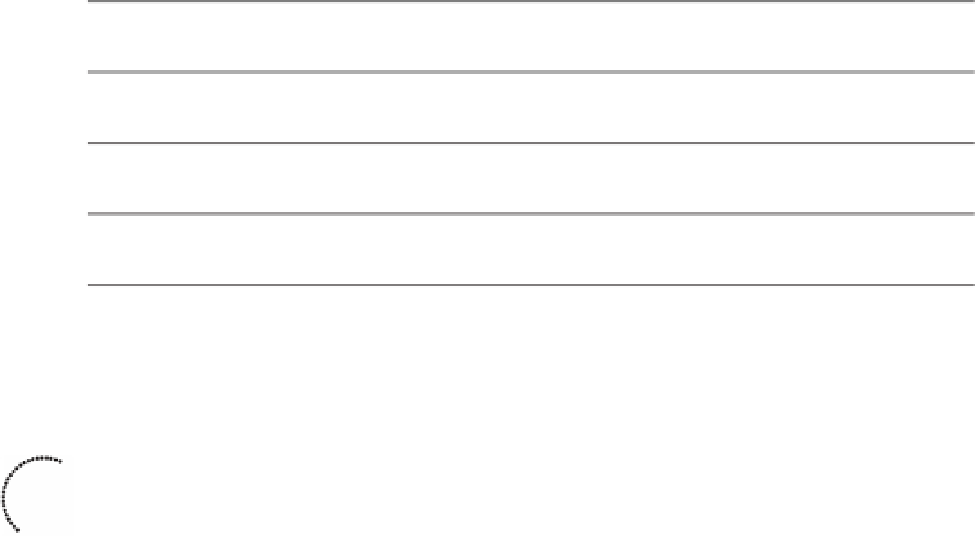Information Technology Reference
In-Depth Information
Ta b l e 8 -1 4
NAT Co nc epts
Description
NAT Address
Type
Dynamically maps an unregistered or private IP address to a registered IP
address from a pool (group) of registered addresses.
Dynamic NAT
Maps multiple unregistered or private IP addresses to a single registered
IP address by using different ports.
PAT
The real IP address of the device that resides in the internal network. This
address is used in the stub domain.
Inside local
address
The translated IP address of the device that resides in the internal net-
work. This address is used in the public network.
Inside global
address
The real IP address of a device that resides in the Internet, outside the
stub domain.
Outside Global
address
The translated IP address of the device that resides in the Internet. This
address is used inside the stub domain.
Outside local
address
Subnetting plays an important part in IPv4 addressing. The subnet mask helps determine
the network, subnetwork, and host part of an IP address. The network architect uses sub-
netting to manipulate the default mask to create subnetworks for LAN and WAN seg-
ments. These subnetworks provide enough addresses for LANs of different sizes.
Point-to-point WAN links usually get a subnet mask that allows for only two hosts be-
cause only two routers are present in the point-to-point WAN link. You should become fa-
miliar with determining subnetwork numbers, broadcast addresses, and host address
ranges given an IP address and mask.
Key
To p i c
Subnet masks are used for Class A, B, and C addresses only. Multicast addresses do not
use subnet masks. A subnet mask is a 32-bit number in which bits are set to 1 to identify
the network portion of the address, and a 0 is the host part of the address. The mask's bits
set to 1 are contiguous on the left portion of the mask; the bits set to 0 are contiguous on
the right portion of the mask. Table 8-15 shows the default masks for Class A, B, and C ad-
dresses. This section addresses various ways to represent IP subnet masks. Understanding
these ways is significant because the representation of a network and its mask can appear
differently in Cisco documentation or on the command-line interface.
Ta b l e 8 -1 5
IPv4 Default Network Address Masks
Class
Binary Mask
Dotted-Decimal Mask
A
11111111 00000000 00000000 00000000
255.0.0.0
B
11111111 11111111 00000000 00000000
255.255.0.0
C
11111111 11111111 11111111 00000000
255.255.255.0






